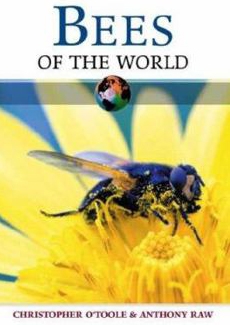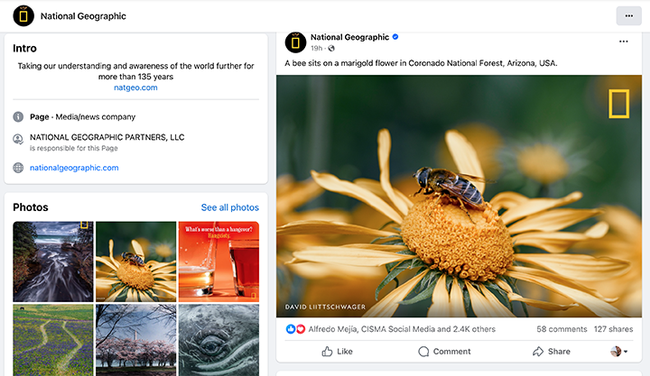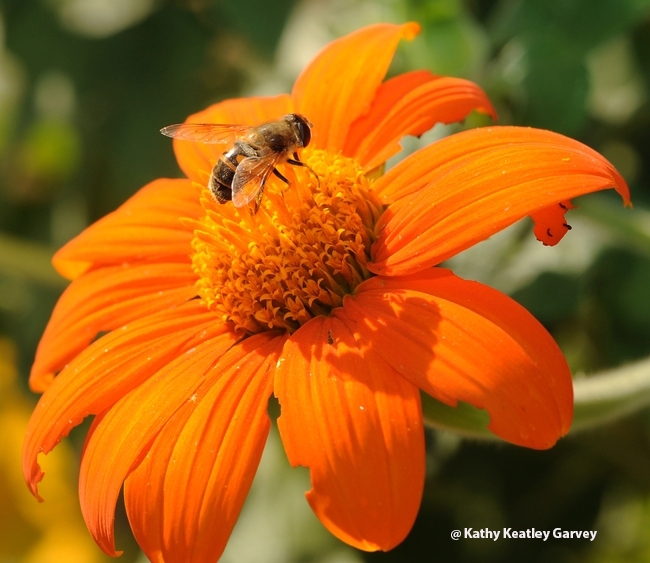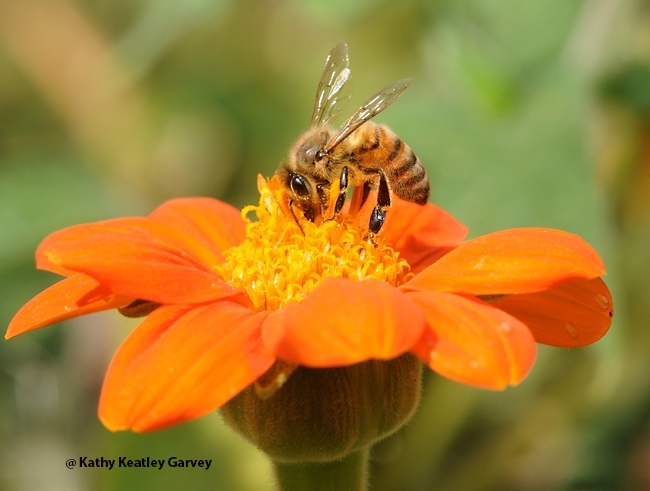Today's Honorary Bee Image Award goes to...drum roll...an image of a humble hoverfly appearing on the National Geographic Facebook page.
The caption reads "A bee sits on a marigold flower in Coronado National Forest, Arizona, USA."
Bee? Umm, no!
Marigold? Umm, no!
Sits? A bee does what?
Hey, hoverfly, you're an honorary bee!
Indeed, why can't the hoverfly, aka syrphid fly or flower fly, gain a little stature?
As of 3 p.m. today, this mistaken-identity image has drawn 2,400 views, 66 comments and 136 shares from National Geographic's 50 million FB followers.
It's a beautiful insect image by freelance photographer David Littschwacher. Who wrote the caption? Not an entomologist. Ironically, however, numerous National Geographic followers are unaware of the faux paux. A sprinkling of the comments:
- "Beautiful picture"
- "Very nice photo; spring brings lots of flowers"
- "A beautiful sight!"
- "Our nature...priceless"
- "Nature's delicate balance beautifully displayed in Coronado National Forest, Arizona, USA."
- "You might want to check your identification on both plant and insect"
- "Not a bee but a hoverfly"
- "That bee is a species of hoverfly, absolutely surprised at you, of all organizations"
- "Leave it to NatGeo…"
- "You would think Nat Geo could identify a bee, instead of a fly! Lesson for people that trust anything on social media, especially pictures"
- "Not on a marigold, either"
- "Looks more like a fly...National Geographic--do your research!"

With so much misinformation and disinformation spreading globally, even the humble hoverfly gets into the act!
Probably one of the most embarrassing mistakes, though, is that dratted fly on the cover of Bees of the World, authored by noted hymenopterists Christopher O'Toole and Anthony Raw.
Syrphid flies (order Diptera) are easily distinguished from honey bees (order Hymenoptera). Among the key differences: (1) syrphids have only one pair of wings, while honey bees have two (2) syrphids have short, stubby antennae, while honey bees have long, bent antennae called genticulate antennae and (3) syrphids have large, wrap-around eyes and honey bees do not.
And if you watch them in action, a hoverfly will hover over a flower before touching down (thus the name). A honey bee is more directional in her flight pattern as she buzzes in to forage on a flower.
Some hoverflies mimic the coloration of bees and wasps, gaining a little protection from predators. Unlike bees, however, hoverflies don't sting.
But cheers, both are pollinators!
Attached Images:

A National Geographic Facebook image shows a hover fly masquerading as a bee.

A drone fly, Eristalis tenax, sipping nectar from a Mexican sunflower, Tithonia rotundifola. It is often mistaken for a bee. Eristalis is a large genus of hoverflies, family Syrphidae, in the order Diptera. (Photo by Kathy Keatley Garvey)

A honey bee, Apis mellifera, sipping nectar from a Mexican sunflower, Tithonia rotundifola. (Photo by Kathy Keatley Garvey)